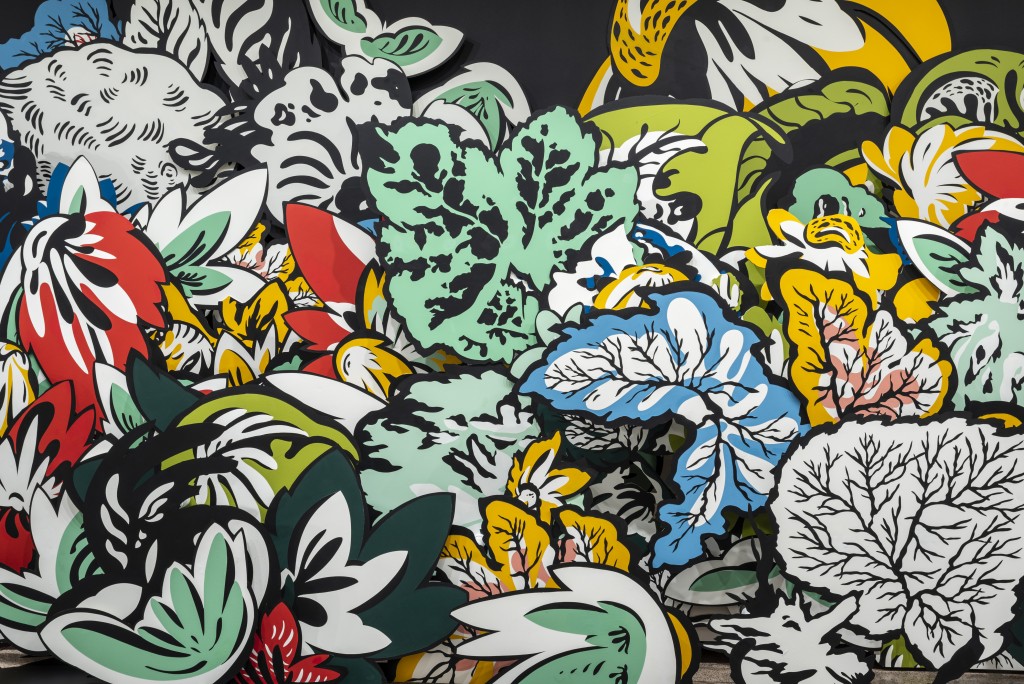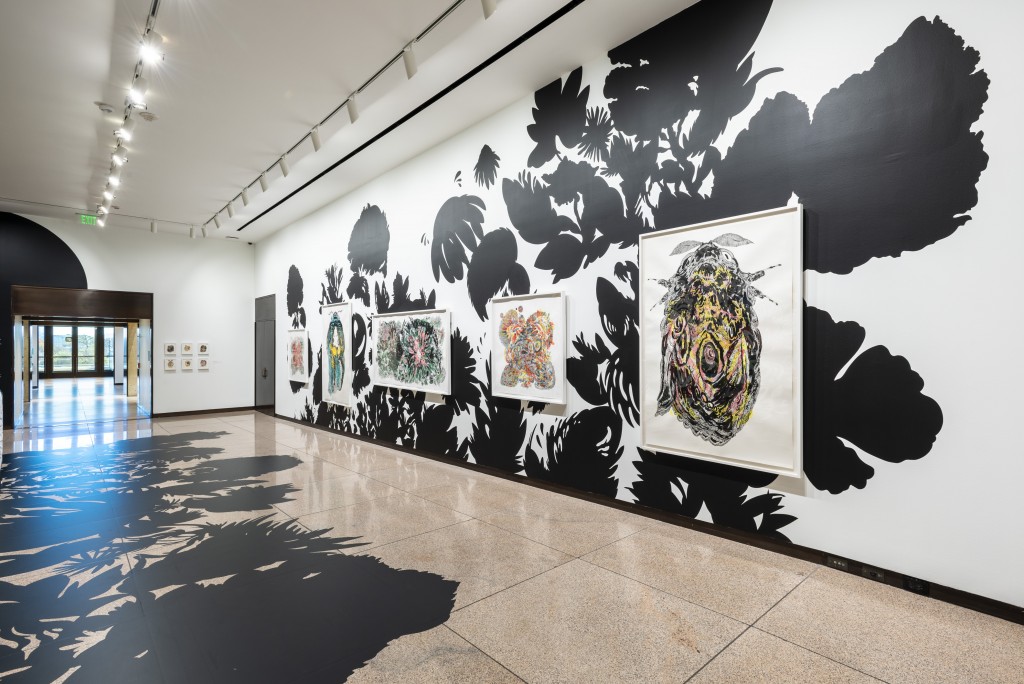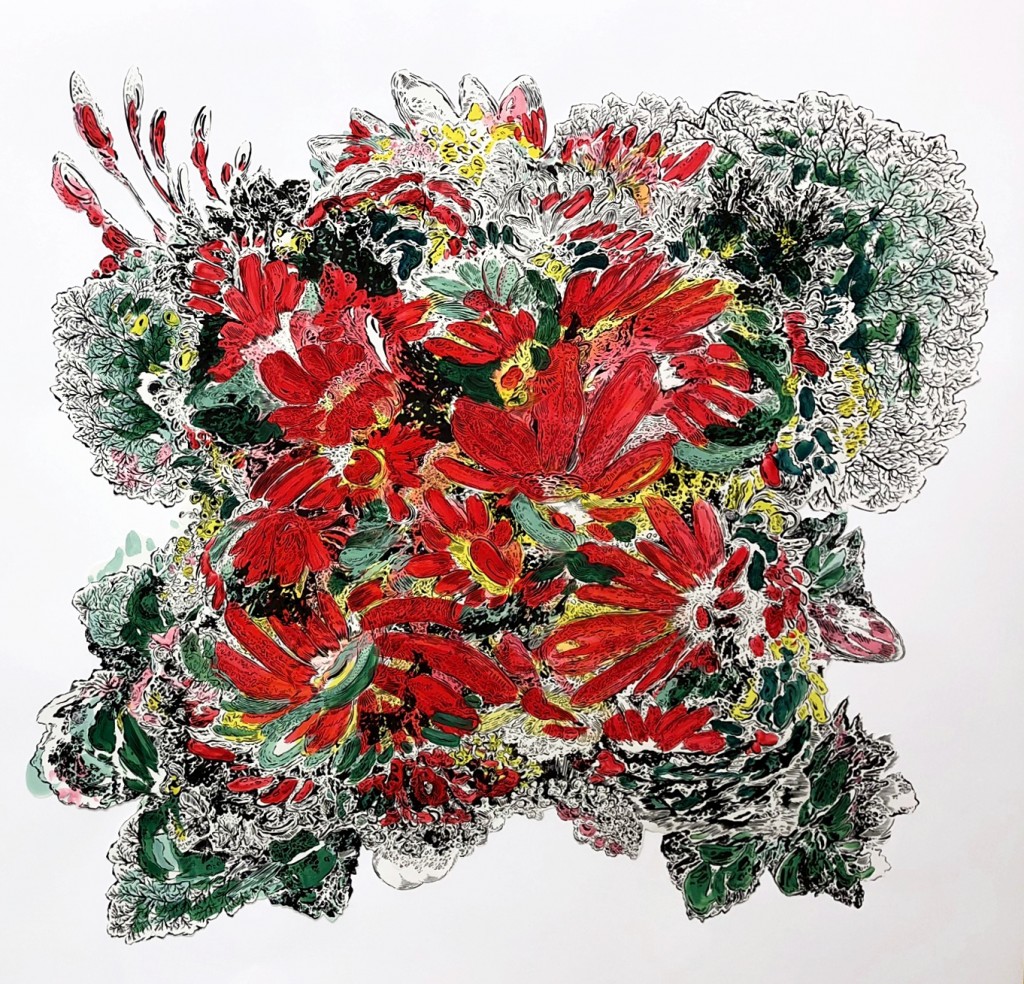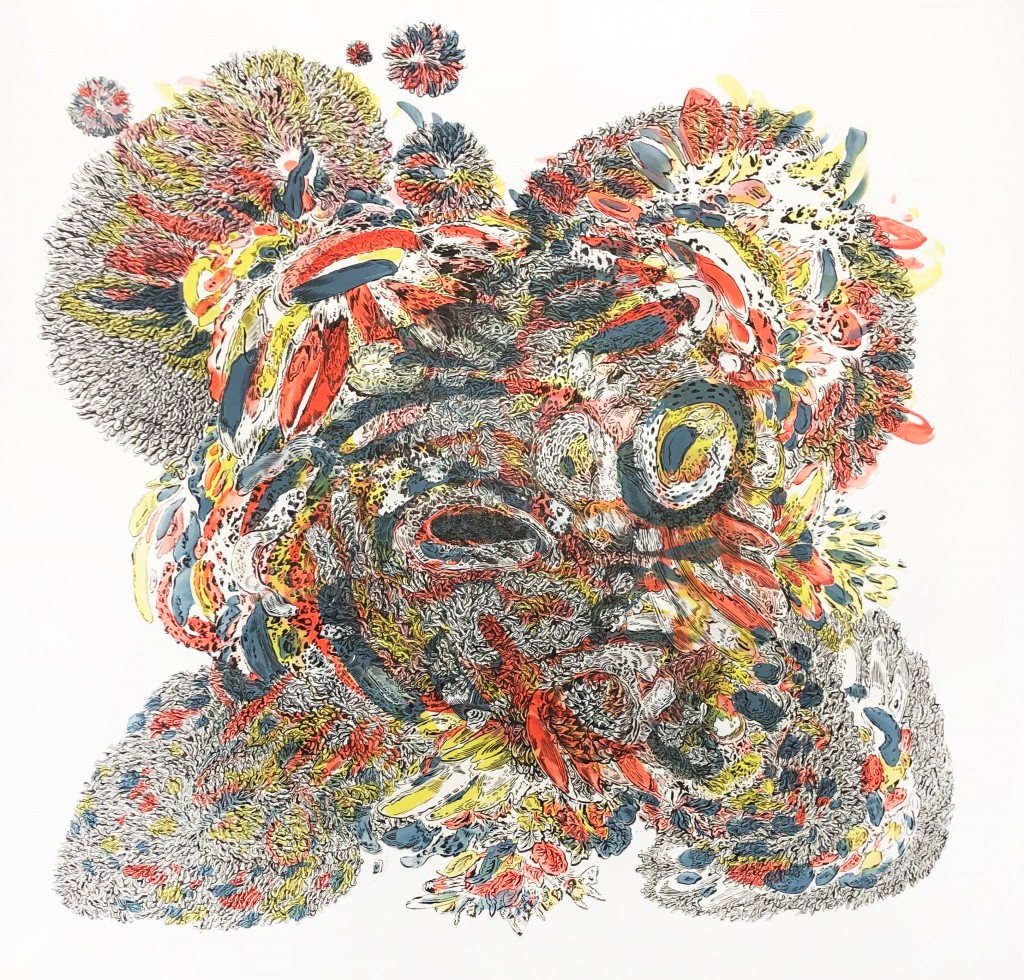Get Lost In The Night Garden Growing At The Amon Carter In Fort Worth
ArtandSeek.net March 16, 2021 47The Amon Carter Museum’s latest commission will send you into a fantastical garden – and maybe get you thinking about the relationship between nature and the feminine.
Houston artist Natasha Bowdoin is known for her cut paper, collage-based work, and site-responsive installations that combines the visual and literary.
Her installation is called “In the Night Garden.” Visitors enter the long narrow gallery, transformed into a garden at night, filled with half-opened blooms, unrestrained growth, and unpredictable wildlife.

“In the Night Garden,” by Natasha Bowdoin. Image: Amon Carter Museum of American Art.
Bowdoin blurs the boundaries between painting and sculpture and installation, immersing viewers in the garden.

Natasha Bowdoin installing “In the Night Garden.” Image: Amon Carter Museum of American Art.
Bowdoin created most of the work on-site, allowing it to grow organically and intuitively. On one side of the gallery wall, Bowdoin uses paint on board and intricate cut paper to create larger-than-life two- and three-dimensional blooms and vegetation.

Detail from “In the Night Garden,” by Natasha Bowdoin. Image: Amon Carter Museum of American Art
On the opposite wall, there are framed smaller works that show imaginative “creatures and blooms that might exist in the night garden,” said Bowdoin.
Another element of the work is cut vinyl that runs across the floor and up the side of the wall. It’s all designed “to give the feeling the organic growth is slowly taking over and creeping through the entire space.”

Cut vinyl blooms give the feeling of vegetation taking over. Detail from “In the Night Garden,” by Natasha Bowdoin. Image: Amon Carter Museum of American Art
In “In the Night Garden,” Bowdoin pays homage to children’s author Maurice Sendak. He wrote the children’s adventure story, “In the Night Kitchen” about a young boy in a kitchen with bakers who are trying to bake him into bread.

“For Maurice, Ranunculus,” by Natasha Bowdoin. Image: courtesy of the artist and Talley Dunn Gallery
Bowdoin also wanted to reference to another book, “Flora’s Dictionary.” Prior to the installation, Bowdoin researched her project at the museum’s library and archive. Among the materials, she discovered the book, published in 1837, on the language of flowers, the Victorian tradition of communicating through bouquet arrangements.
“This Victorian-era floral dictionary taught women how to construct and decipher messages through floral arrangements in a time when direct expression was not encouraged for women.”
So Bowdoin thought about what she wanted her flowers to say: “My drawings are messages dedicated to those who have been influential to me while at the same time upend conventional notions of how femininity and nature should be represented.”

“For Sadie, Chrysanthemum,” by Natasha Bowdoin. Image: courtesy of the artist and Talley Dunn Gallery.
“It’s really about creating a kind of more nuanced visualization of nature, one where people can kind of imagine themselves into a different kind of version of the natural world. So at the same time, a lot of the work is about deconstructing old, limited symbolism that we’ve attached to nature and also attached to the feminine. Much of the work actually explores that relationship between ideas of the feminine and the natural so coming up with a more nuanced, bolder, more aggressive iteration of both, I think, is actually more representative of the two in the first place.”
Bowdoin’s installation was commissioned as part of the museum’s commitment to showcase work by living artists.
Got a tip? Email Gila Espinoza at gespinoza@kera.org. You can follow her on Twitter @espinoza_kera.
Art&Seek is made possible through the generosity of our members. If you find this reporting valuable, consider making a tax-deductible gift today. Thank you.










